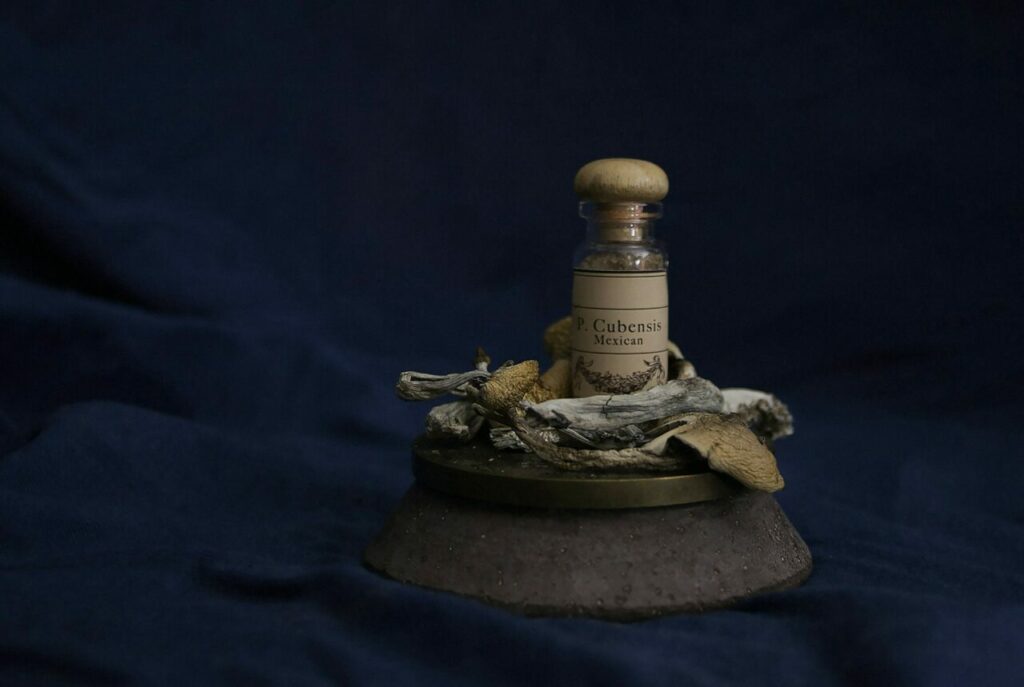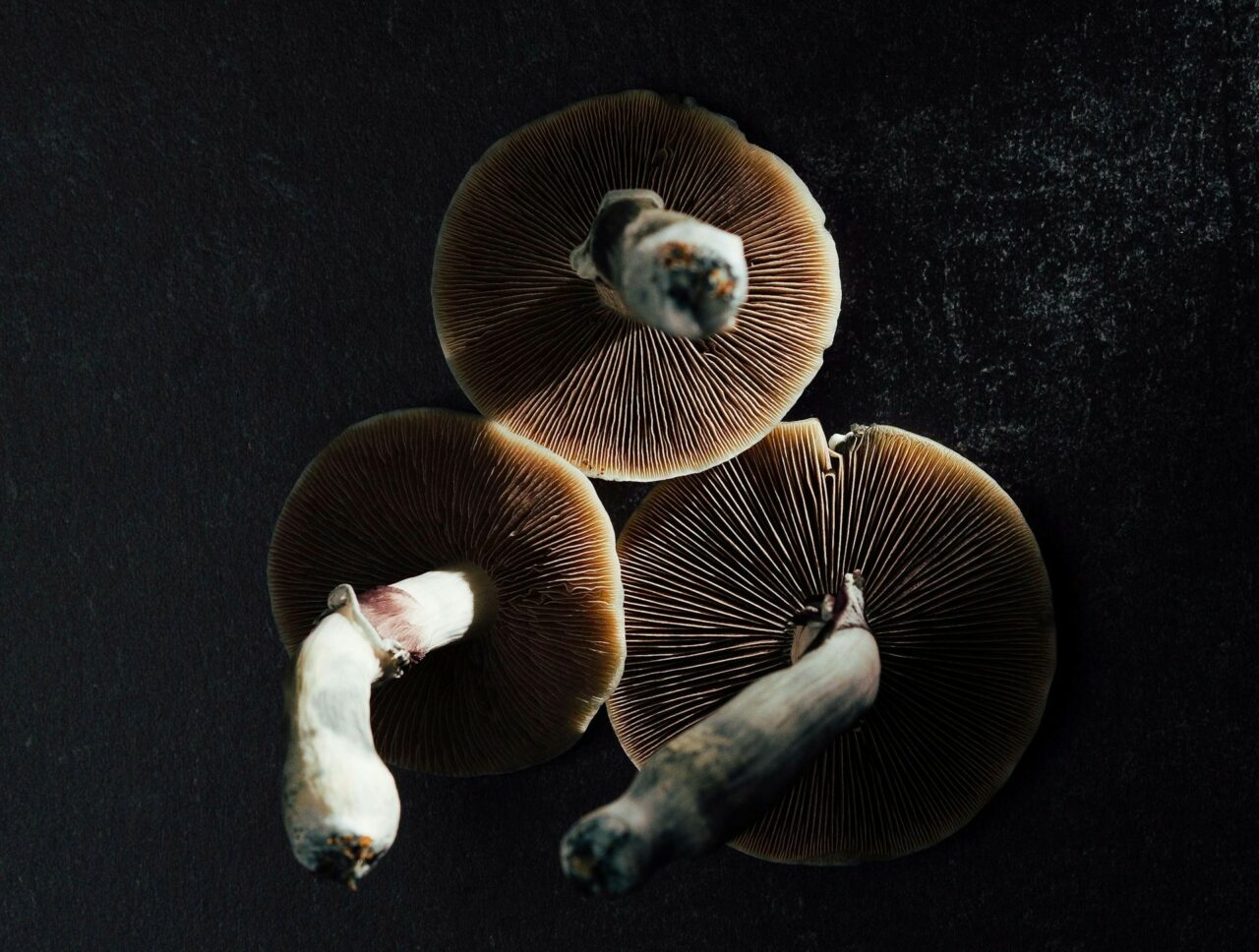The surge in interest for natural magic mushrooms in Canada has been accompanied by a rise in the popularity of lab-created psilocybin products. These lab-made items are favoured by many researchers because their dosage can be precisely controlled. However, the potency of natural mushrooms can often exceed that of their lab-produced equivalents, a fact that may not be well-known. Experts point out notable differences between the two, including variances in strength.

Key Takeaways:
- More than 180 species of natural mushrooms provide varying degrees of potency, influenced by factors such as species, method of use, cultivation practices, and individual tolerance.
- Synthetic psilocybin, a lab-developed version of the natural compound, is created in controlled settings to maintain consistency and purity, particularly for clinical research in mental health treatments.
- The combined impact of different compounds found in psychedelic mushrooms, like psilocin and baeocystin, can lead to a more powerful and profound experience compared to a single compound alone.
Growing Market: Various Forms of Psychedelics
Psilocybin mushrooms are gaining rapid popularity in Canada, particularly as a treatment for specific mental health disorders like OCD, depression, PTSD, and anxiety. With this rising interest, provincial governments are starting to contemplate the decriminalization of recreational use.
In 2020, limited medical use of these mushrooms was granted by Canada under certain circumstances. Just in the previous year, the federal government permitted specific terminally ill patients to use these substances for symptom management.
This progressive shift has given rise to the introduction of synthetic psychedelics.
Ongoing Debate
The continuous discussion about natural versus lab-made psychedelics focuses on safety, accessibility, and cost considerations.
Many people argue that natural psychedelics provide a more comprehensive and traditional experience. Conversely, supporters of lab-made versions underscore their ability to be standardized for medical purposes, along with guaranteed dosage control and quality checks.
While lab-manufactured psychoactive substances might increase accessibility, there are still lingering concerns about potential monopolization of the drug market. Critics warn that this could lead to less accessibility and increased expenses for users.
/wp:paragraph –>A Comprehensive Look at Psilocybin
Psilocybe cubensis, a variant of magic mushroom, is among the numerous naturally occurring psychedelic substances available these days. Magic mushrooms, recognized for their psychoactive effects, exist in various strains such as Golden Teachers, Amazonian Cubensis, Blue Meanies, and more, with Psilocybe cubensis being the most notable type.
Deciphering the Psychedelic Mechanism
Psilocin, a compound derived from this mushroom, transforms into another chemical when metabolized by the liver. This resulted substance interacts with the brain’s serotonin receptors, specifically the 5-HT2A receptor.
This receptor is vital for mood regulation, cognitive functions, and perception. Its interaction with the newly formed compound alters the normal operation of serotonin pathways, leading to modified visual and auditory perception, thought pattern alterations, and emotional shifts. This process results in elevated mood, enhanced creativity, introspection, and the so-called “psychedelic” experiences.
Two Main Categories
| Natural | Found in over 180 mushroom species, the potency varies depending on the species. Psilocybe cubensis is a prevalent variety. The effects can vary based on consumption methods, cultivation techniques, and individual tolerance. |
| Synthetic | Manufactured in labs and chemically identical to natural compounds. They are produced in controlled settings to guarantee consistency and purity. These substances are increasingly being studied for clinical uses, particularly in the realm of mental health treatments. |
Comparing Nature’s Offering and Scientific Innovation: The Fundamental Differences
Natural versions of these substances are found in specific types of magic mushrooms. Indigenous communities in North and South America have utilized these mushrooms in their rituals and ceremonies, deeming them sacred or divine.
- Derived from plants and mushrooms
- Utilized in ancient rituals and medicinal practices
- The unique genetic composition of each strain influences its potency
On the other hand, a
Synthetic drug is These substances are designed to closely mimic the natural chemical structure of specific compounds. They are carefully produced by experts in controlled settings to ensure precision. While they function in similar ways to their natural counterparts, they can alter the overall psychedelic experience.
- Devised by proficient pharmaceutical experts
- Innovative creations intended for medical uses
- Precise potency due to a regulated production process
Natural substances provide more advantages due to their bioactive compounds. Various types of mushrooms can have different amounts of psilocybin and other compounds, creating a range of effects.
Researcher Insights
A study carried out at Hebrew University showed that psychedelic mushrooms create a more potent and enduring impact on synaptic plasticity than their synthetic counterparts. The research group explored how the drug affected the brain activity of mice by observing changes in their behavior and specific brain chemicals.
The study revealed that the extract reduced head twitches and promoted the growth of new brain connections. This suggests that mushroom extract might have more benefits than a single compound.
The researchers also introduced the notion of the “entourage effect”. They described it as the event where the combined effect of multiple compounds in psychedelic mushrooms could be more potent than the impact of individual compounds. Within the context of mushrooms, psilocin, baeocystin, and other tryptamines could work together to create a profound experience.
These extra chemicals are absent in lab-produced substances, which could result in minor differences in effects, even when the psychedelic content is the same.
Expert Opinions on the Superiority of Nature
Research consistently shows that psilocybin, regardless of its form, delivers promising results in treating various psychiatric disorders. A study carried out in 2024 examined the effects of controlled substances on patients with treatment-resistant depression. The study reported symptom reduction following magic mushroom administration.
When combined with other treatments, organic psychedelics may facilitate greater emotional processing and insights during therapy sessions, thus enhancing long-term results.
Scientists from the same university have found that hallucinogenic mushrooms boost synaptic plasticity. They possess a distinct metabolic profile that affects oxidative stress and energy production pathways, unlike lab-made psychedelics.
The Impact on the Market
The growing body of research in this area could shape Canadians’ perspectives and buying behaviors related to psychedelics. Early initiatives from Health Canada, such as the Special Access Program, are displaying encouraging signs of facilitating legalization and revolutionizing the therapeutic landscape. Psilocybin-assisted therapy shows potential to be a prominent treatment strategy in the near future.
Organic options are anticipated to gain increasing importance in clinical trials and therapeutic settings. As the country progresses towards fully harnessing the potential of organic psychedelics, major improvements in mental health treatments appear to be on the horizon.
How to Safely Purchase Shrooms in Canada
- Through Section 56 Exemption: Health Canada recognizes that patients with severe medical conditions might utilize psilocybin as a substitute therapy. This exemption is part of the Controlled Drugs and Substances Act.
- Clinical Trials: Initial clinical trials have been approved to investigate the drug’s potential in treating mental health disorders. Participants must meet specific requirements and go through a physician’s evaluation.
- Online Market: Psilocybin capsules or edibles can be purchased from online vendors in Canada, but it’s crucial to buy from reputable sources.
Experience the Power of Natural Substances
Nature abounds with miracles, shrooms being one of them. Instead of opting for synthetic psychedelics, consider the naturally potent magic mushrooms from Canada. They are beneficial and therapeutic. Explore the best, naturally derived shroom strains at Shroom Delivery Toronto Canada.
The shrooms we have available exceed standard quality by maintaining their purest and most genuine composition in dried form. Order today and have your chosen products delivered conveniently and discreetly to your doorstep.
Frequently Asked Questions
What are baeocystin and norbaeocystin?
Both substances are tryptamine or indole alkaloids. They are chemically similar to psilocybin. These tryptamine derivatives act as secondary alkaloids in shrooms, contributing to the overall psychedelic experience, though to a lesser extent. Baeocystin and Norbaeocystin share a similar chemical structure but differ in their psychoactive effects.
Are organic dried mushrooms included in capsules and edibles?
The experience can vary depending on the source. Online Dispensaries offer products high in organic compounds, facilitating the full entourage effect. In contrast, synthetic compounds usually found in capsules are frequently used in clinical trials and clinics.
Can natural psychedelics yield more profound experiences?
Remember, expecting a deep experience from a natural psychedelic could indeed generate the very same result. After all, our anticipations, which form part of the ‘set’, can guide the journey. Natural psychedelics, often linked with ceremonial traditions, can create uniquely fulfilling experiences within this ritualistic context. These experiences are different in many ways from clinic sessions that use synthetic compounds.





